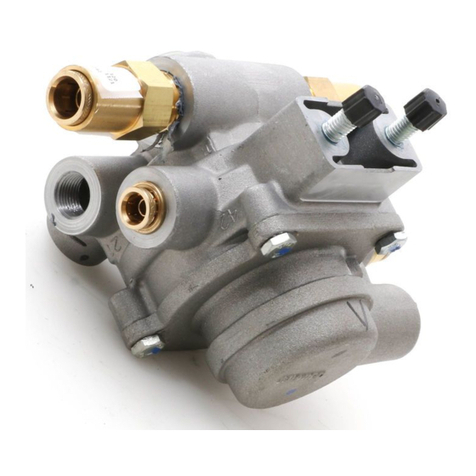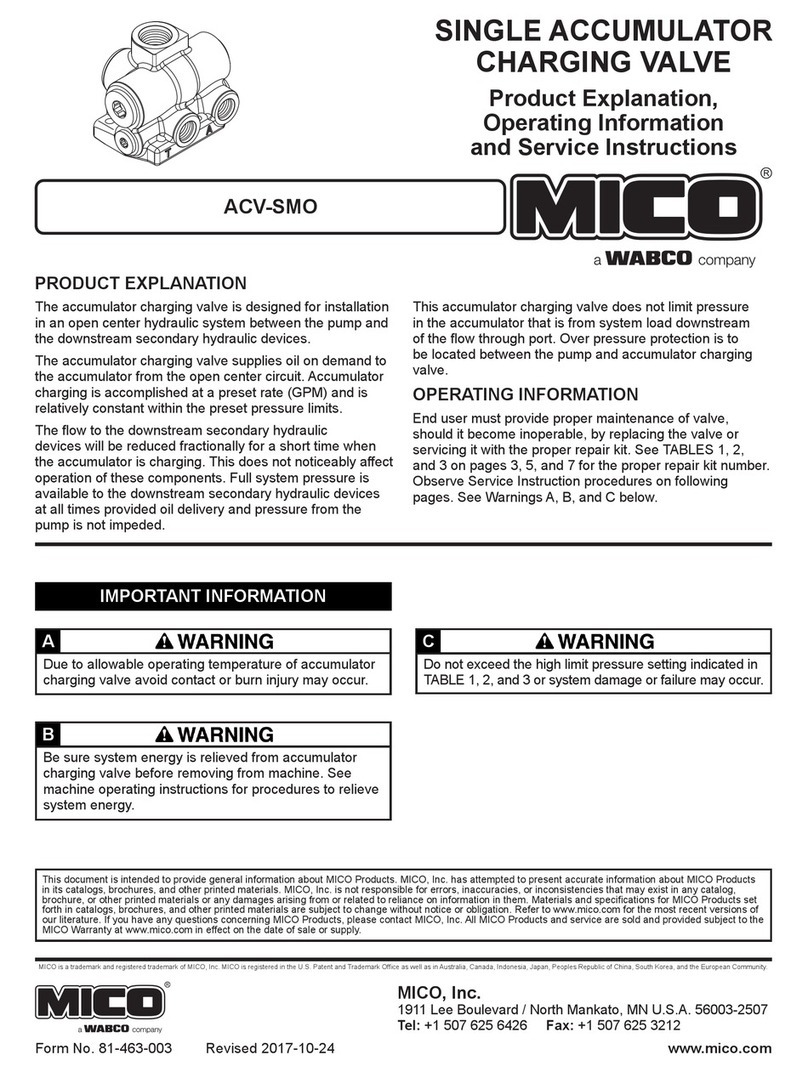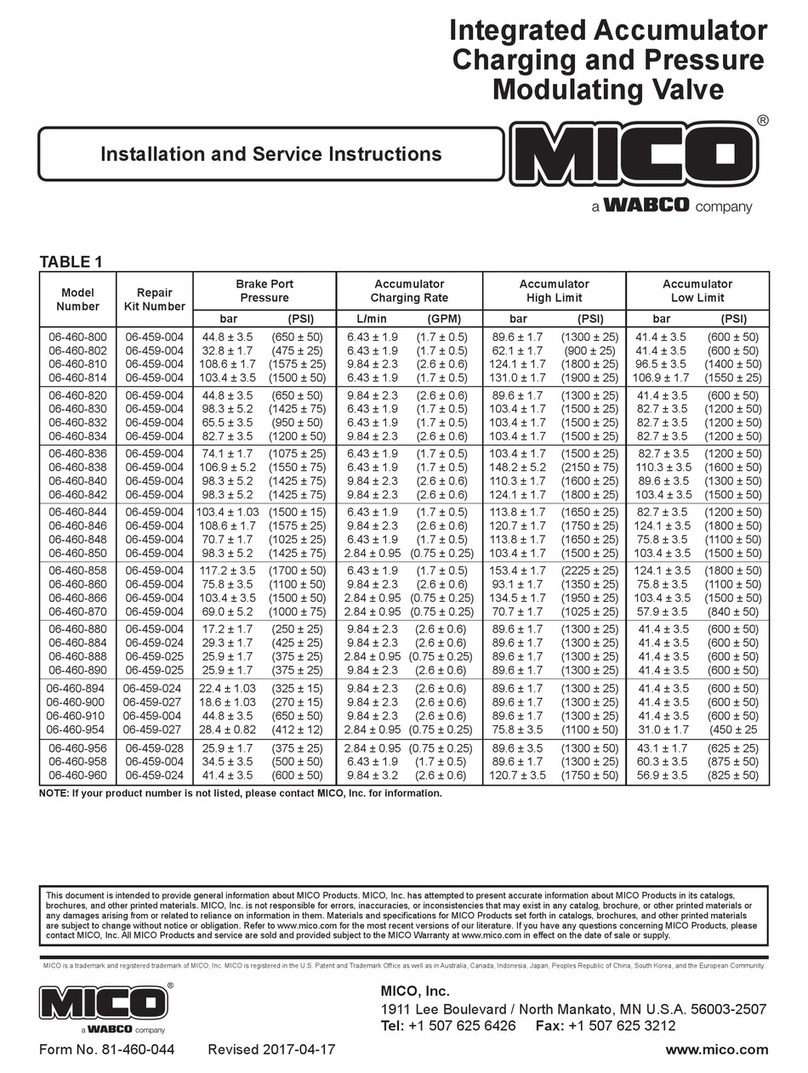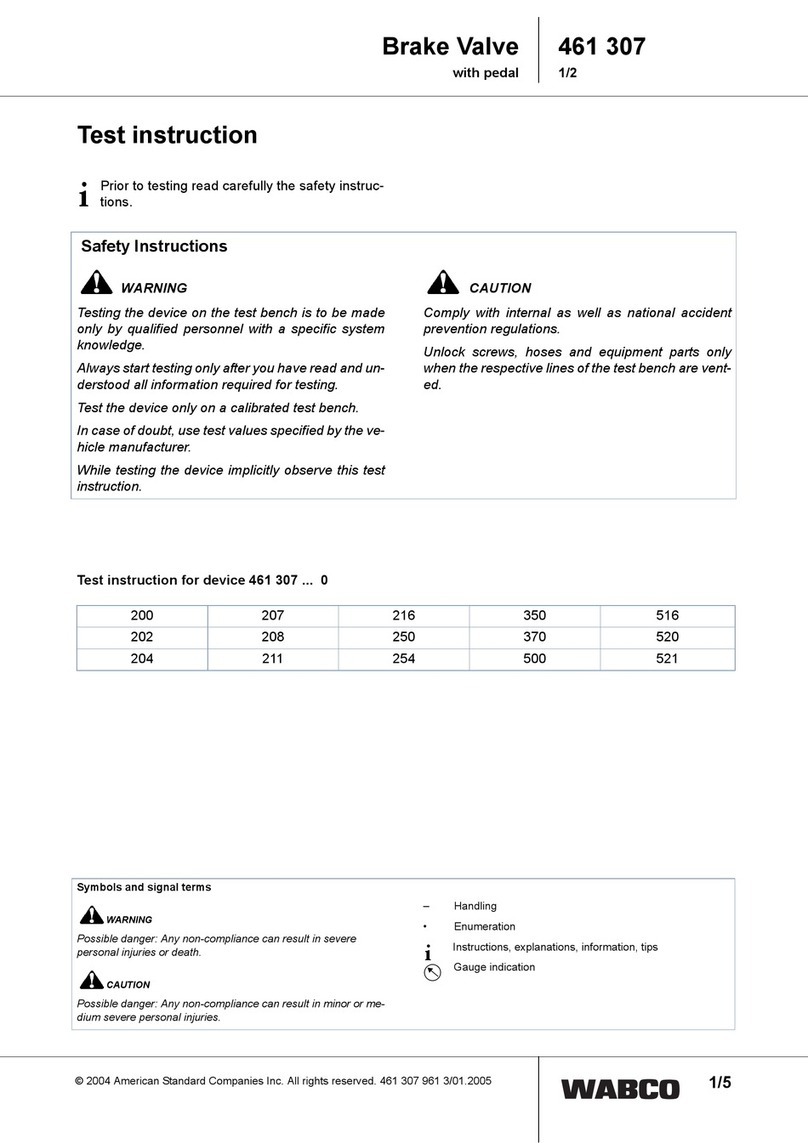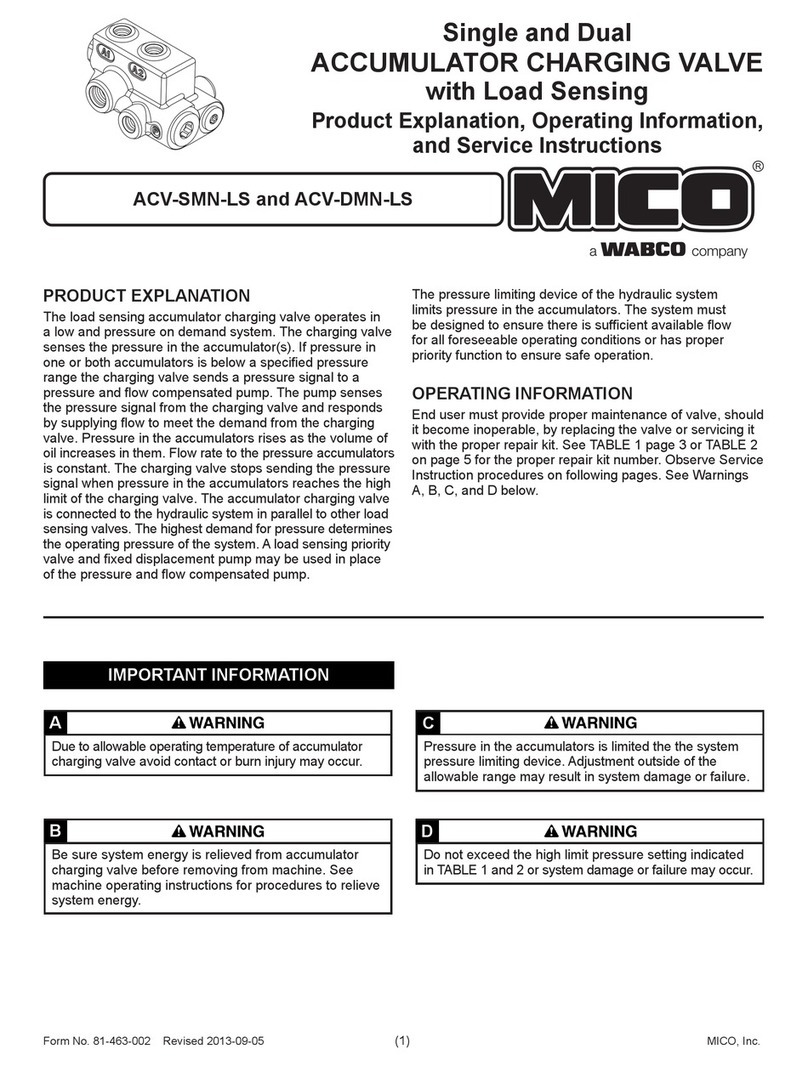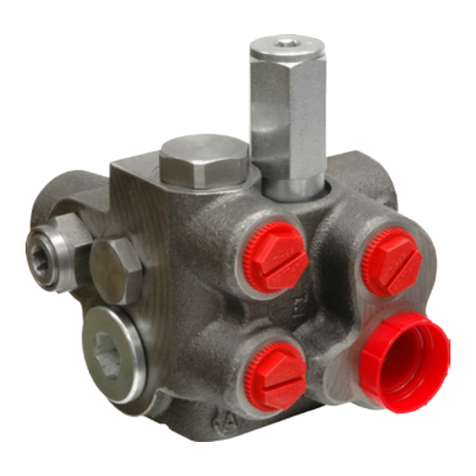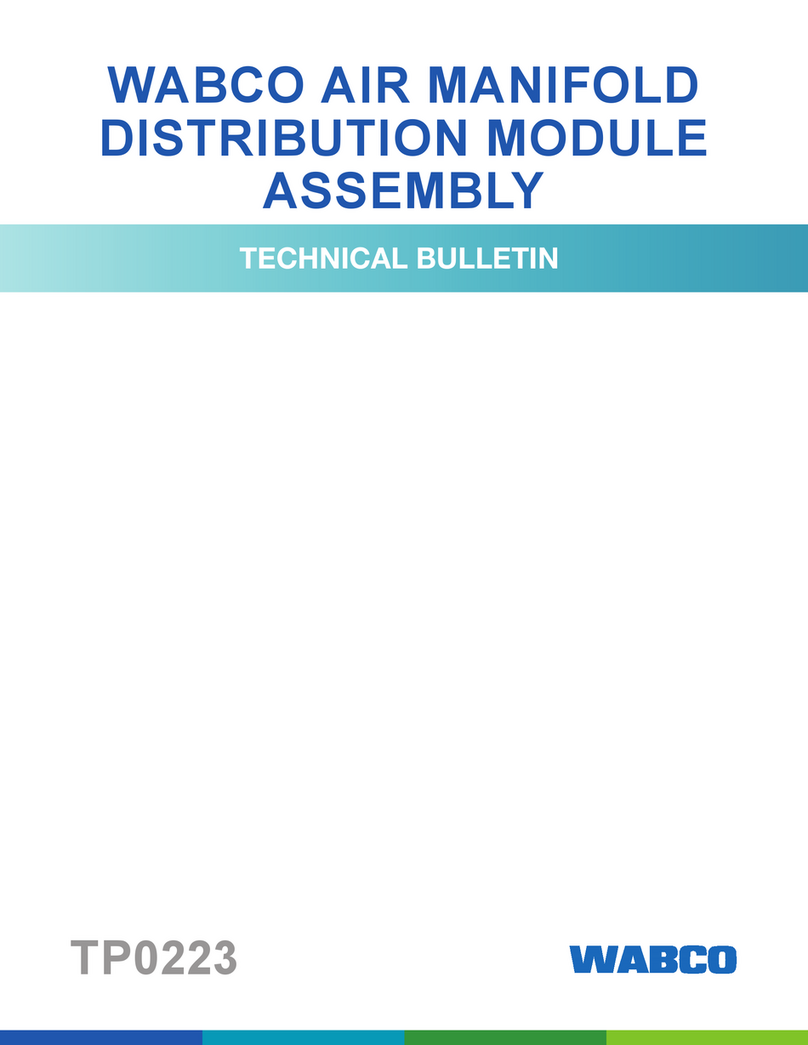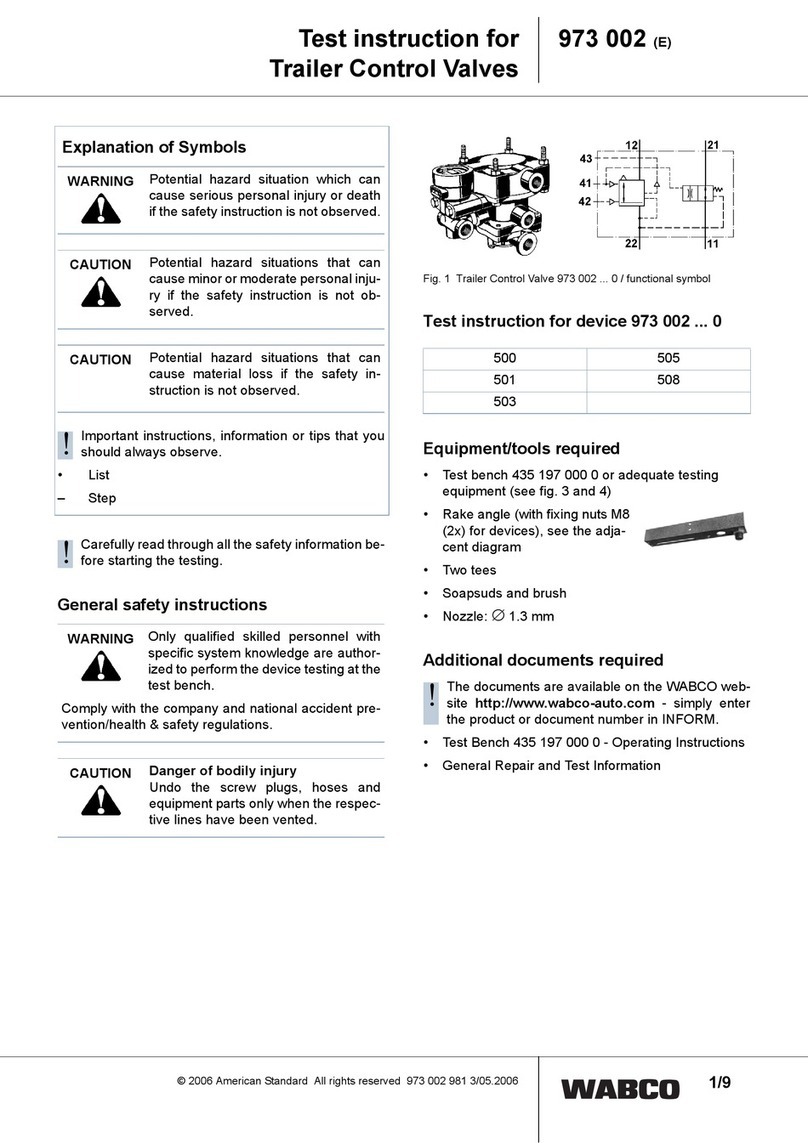
Page 9 of 14
2391, S.5
September, 2004
Repair Track Maintenance
3.2 EMERGENCY PORTION
If the valve requiring attention is an ABDX, ABDXL, ABDX-R or ABDXL-R emergency portion (Figure 2 and 3), the
following steps should be taken:
3.2.1 Close the branch pipe cut-out cock and drain the air out of auxiliary reservoir, emergency reservoir and
brake cylinder by pulling the release valve handle on the service portion.
3.2.2 Remove gaskets in both brake pipe end hose couplings and replace with NEW WABCO Freight Car
Products coupling gaskets. Follow Rule 5 - in the current Field Manual of the AAR Interchange Rules as
to hose renewal.
3.2.3 Blow any dirt or water out of the air supply line and couple air supply to approved Single Car Test Device.
3.2.4 Couple Single Car Test Device to one end of the car, preferably the “B” end.
3.2.5 With both angle cocks open, blow out the brake pipe by moving the test device handle to Position 1.
Close the angle/end cock to apply a dummy coupling. Once the dummy coupling is applied leave both
angle/end cocks open.
3.2.6 Remove the bowl from the dirt collector and leave it off until a cleaned emergency portion is applied.
NOTE: Inspect the dirt collector check valve. If it is made from aluminum, it must be removed and scrapped
and replaced with a NEW WABCO Freight Car Products replacement part.
WARNING: When blowing out the brake pipe, and/or the opening and closing of air valves, make sure
all personnel are clear of the ends of the vehicle as well as under the vehicle to protect against injury from
flying debris as well as potential movement of brake rigging, cylinders, etc.
3.2.7 Carefully open the branch pipe cut-out cock for a few seconds to blow dirt from the branch pipe, then close.
3.2.8 Scrape, wipe and blow off with a jet of low pressure air (less than 30 psi) all dirt adjacent to the gasket
between the pipe bracket and valve portion. Using the blower hose, blow off the emergency portion, pipe
bracket hopper slopes, car under frames, etc., to free them of all loose dirt that may otherwise get into the
emergency portion or pipe bracket when the portion is being removed and reapplied.
3.2.9 On an emergency portion with an external vent protector assembly, remove the vent protector from the
failed portion and apply a WABCO Freight Car Products standard vent protector plug, as shown in Figure
6. On a failed emergency portion with internal vent protector assembly, completely cover the internal vent
protector assembly with duct tape or tape with equivalent coverage and adhesion.
3.2.10 The cleaned emergency portion must be handled with care to avoid entrance of dirt or water which could
damage the internal parts.
IMPORTANT: The shipping cover must not be removed from the clean emergency portion until it is ready
to be mounted to the pipe bracket on the car.
3.2.11 Remove the failed emergency portion and apply shipping cover, as shown in Figure 4, and tighten nuts.
3.2.12 Remove emergency portion pipe bracket gasket and discard properly.
3.1.13 If pipe bracket is single sided, the pipe bracket strainer nut will be visible. Remove the pipe bracket strainer
using strainer nut wrench. Install a NEW WABCO Freight Car Products pipe bracket strainer. A wooden
mandrel of suitable form will assist in guiding the strainer into proper position. Make certain its inner end

